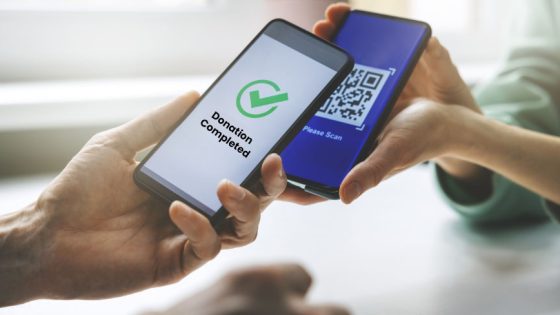Nonprofits, regardless of their size or mission, consistently face the challenge of securing financial support to amplify their impact. The fundraising landscape is vast, encompassing everything from grant writing and securing major gifts to running digital campaigns and planning events. Among these strategies, the Call to Heart—also known as Fund the Need, Mission Moment, or Paddle Raise—stands out as a powerful method for deeply engaging donors.
Unlike traditional auctions, a Call to Heart directly asks for donations, creating a moment where your organization’s mission and the collective spirit of its supporters come together to drive meaningful change. Typically led by an emcee, auctioneer, or Board member, the process offers multiple donation levels—starting from the highest contribution and moving down to more modest amounts—allowing donors to give at a level that matches their capacity. Volunteers within the audience act as spotters for raised paddles and energize the room, creating an environment that encourages giving.
The Call to Heart follows the most impactful moment of the program, often after the live auction, where a speaker or video connects the audience to your mission. Short stories of success prepare attendees to respond with a donation, while bartenders and servers pause service to minimize distractions during this critical moment.
Ready to amplify your nonprofit’s fundraising success? Let our team help you plan and execute your next fundraising event, ensuring it deeply engages supporters and drives your mission forward. Contact us to get started and watch how a well-crafted strategy can transform your fundraising efforts.
Choosing the Right Facilitator
The decision between hiring a professional auctioneer or using internal figures like staff or Board members for the Call to Heart can be complex and depends on the familiarity of the audience and the dynamics of the organization. While professional auctioneers bring confidence and structure to the appeal, there are situations where a well-known and respected member of the community or organization may connect more authentically with the audience.
Understanding your audience is crucial in deciding the most effective approach to structuring and delivering your fundraising efforts, whether through professional facilitation or leveraging the credibility and connections of Board members or staff.
Importance of Pre-Event Planning and Securing Lead Donors
Audience engagement is crucial, but the success of a Call to Heart is largely based on detailed pre-event planning. Organizational leaders should identify and engage potential and past donors, encouraging them to lead by example with predefined donation amounts. This strategy strengthens relationships with supporters and gives those unable to attend in person a way to participate.
For an impactful Call to Heart, crafting a compelling narrative that emotionally connects with your audience is also critical. Use storytelling to bring your mission to life—whether through speakers or videos—so that donors feel personally invested in supporting your cause. This preparation ensures that donors are emotionally engaged before the ask even begins.
Securing a lead donor willing to contribute at the highest solicited level is imperative, setting a precedent and sustaining the momentum of the appeal. Donation levels should be determined and structured in descending order (e.g., $10,000, $5,000, $2,500, $1,000, $500, $250, $100), allowing donors at all capacities to participate. Though these amounts don’t need to directly align with organizational costs, reminding donors of the mission throughout the ask is key to sustaining emotional connection.
In an inclusive final push, the “All Paddles In” initiative invites participation at the $100 level. Paddles raised are collected to be entered into an immediate drawing for a desirable prize, thereby maximizing engagement and concluding the Call to Heart on a celebratory note.
Additionally, leveraging substantial donations—such as a large contribution of, for example, $50,000—can be a strategic move. This can either serve as a high-point kickoff to energize the initial ask or as a matching challenge at a specific giving level, effectively doubling the impact of collected donations.
Steps to Executing a Call to Heart
A successful Call to Heart requires careful planning and execution. Here are the steps to help you set up your event for success:
- Volunteer Coordination
- Recruit and train volunteers who will help collect donations and keep enthusiasm high during the event.
- Brief your volunteers on key messaging related to your nonprofit’s mission so they can engage attendees if needed.
- Event Execution
- Begin the Call to Heart after a peak emotional moment, such as a powerful speech or video. This keeps the audience emotionally engaged and primed for giving.
- Ensure that bartenders and servers pause their activities during this critical period to minimize distractions.
- Offer donation levels in descending order, starting with the highest commitment and moving down to more accessible levels. Volunteers should actively engage, ensuring a seamless donation flow.
- All Paddles In
- Wrap up the Call to Heart with an inclusive “All Paddles In” initiative at the $100 level, or a similarly accessible tier. Encourage everyone to participate by offering a prize drawing for those who contribute.
- Post-Event Engagement
- Follow up with personalized thank-you messages and updates on how the funds raised will support your nonprofit’s mission. Share a recap of the event, perhaps with a video, to keep donors engaged and connected.
Measuring Success of a Call to Heart
Evaluating the success of a Call to Heart involves more than just counting the funds raised. Here are key metrics to consider:
- Total Funds Raised: Compare the total amount raised to previous events or set goals. Identify which giving tiers performed best and adjust future appeals accordingly.
- Participation Rate: Measure the percentage of attendees who contributed. Higher participation rates often correlate with a more successful event.
- Average Gift Size: Analyze the average donation size. If certain levels underperform, consider adjusting messaging or donor outreach strategies.
- Donor Retention: Track whether donors return for future contributions. A successful Call to Heart should foster lasting relationships.
- Post-Event Engagement: Monitor the effectiveness of your follow-up strategy. A strong post-event communication plan can turn one-time donors into long-term supporters.
Harnessing the Power of a Call to Heart for Fundraising Success
By strategically positioning the Call to Heart after the most impactful moments of your event, and tailoring the appeal to your audience, your nonprofit can significantly amplify its fundraising efforts. A well-executed Call to Heart not only raises critical funds but also creates a memorable and emotional connection with your supporters, fostering long-term relationships.
With thoughtful pre-event planning, an emotional connection during the event, and diligent follow-up afterward, the Call to Heart becomes more than just a fundraising tactic—it transforms into a powerful moment of unity and purpose, helping your organization achieve its mission.
Ready to amplify your nonprofit’s fundraising success? Let our team help you plan and execute your next fundraising event, ensuring it deeply engages supporters and drives your mission forward. Contact us today to get started and watch how a well-crafted strategy can transform your fundraising efforts.






